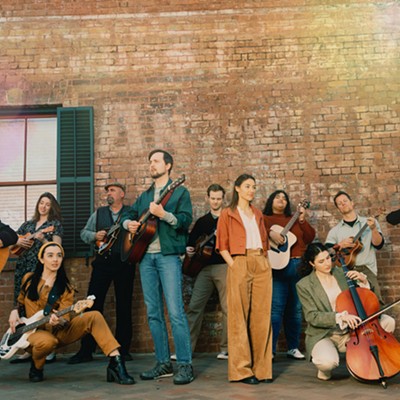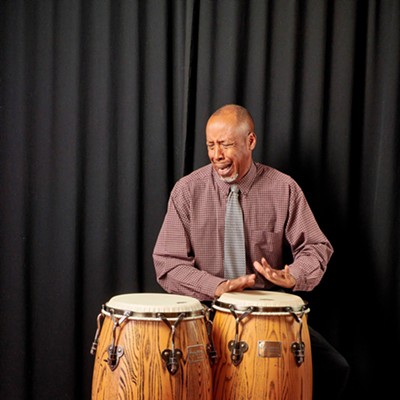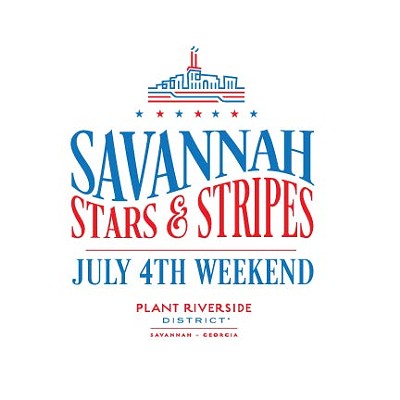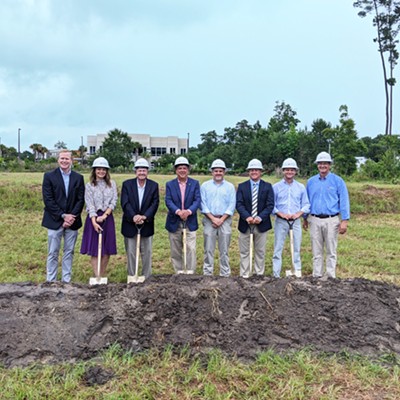Like so many people who were tired of their nine to five jobs, Emily Pilloton dreamed of doing bigger things, of impacting the world in a positive way. Unlike most people, she did something about it, leaving behind a job to found Project H, a non–profit design group dedicated to re–focusing design away from materials and toward solutions for real world problems.
Only two years old, the Project H team is already hard at work on homelessness in Los Angeles, foster home quality in Texas, and public education in North Carolina, just to name a few.
Pilloton also just published a book called Design Revolution: 100 Products that Empower People, highlighting some shining examples that marry good design with humanitarian ends. Instead of just going on a book tour, she loaded 40 of the items into an Airstream trailer and is now driving around to schools, trying to help inspire people, particularly the next generation of designers.
After only a couple weeks on the road, Pilloton’s already crossed the United States from California to Southeast Georgia, and adopted a dog. On Saturday, she’s parking the Airstream in front of the Trustees Theater. We spoke with her over the phone as she drove from Texas to Louisiana last week.
What’s the purpose of the Design Revolution Road Show?
Emily Pilloton: The Road Show is a great collection of evidence providing some proof that design can make a difference in people’s lives and in communities and in economies. The goal is not just to bring all this stuff to their doorstep, but also provide the tools for a 20 year old design student who wants to work on humanitarian design projects but doesn’t know how. Half of the goal is make the case for design as a change agent, and the other is to provide the tools to help people to do that.
There’s no shortage of problems in the world that could be addressed by design, but how do you go about choosing the projects that your organization takes on?
Emily Pilloton: We’ve been around for two years, and a lot of times the projects come out of the local teams that we have set up for specific projects. The projects come out of a very personal place. “My adopted brother went through foster care and I know how bad the system is. Maybe we should try and work with a foster care home.” That’s actually a project that came out of Austin. Ultimately, for us, it comes down to what we can tackle. Within a big problem like homelessness, our team in Los Angeles is looking at solutions for people living in homeless shelters. Instead of trying to tackle homelessness as a whole, they went in and picked apart the issue and asked, “Where could design have an impact?” When they started working with that shelter in particular, they met with them every week, on Sundays, all day long. It was six designers and six women who were living in the homeless shelter. They were as much a part of the process as the design team.
If you’re meeting with the homeless shelter every week, it sounds like this is a pretty comprehensive process time–wise, and homeless shelters, among other socially overlooked groups, aren’t exactly rolling in dough. How do you keep the bills paid?
Emily Pilloton: Not very well. We have 22 ongoing projects with basically $100,000 over two years and no paid employees. Technically, I’m a volunteer. One way that we keep our costs low is by using volunteer labor, which is not a great business model, but what it does is force those who are involved to either commit or fall to the wayside. We have very few people who are with us for a few weeks and then we never see again. The people who come to us know that it’s a lot of work. As far as project costs go, we’re not going to do anything that is exorbitantly expensive because we want to make the case that design can be accessible. We came up with this playground called Learning Landscapes. It’s a way for kids to learn math outside. It’s very simple space made from reclaimed tires and then we wrote this workbook on all these different games you can play within this space. The teachers love it. We’ve built six so far, and we’ll build 10 more this year.
You’ve now got local chapters in a handful of metropolitan areas. How do these local chapters get established? Could a bunch of Savannahians, after seeing the Road Show, band together and form a new branch?
Emily Pilloton: Actually no. We stopped using the term chapter because it implies anyone can start one. There’s no team that exists without a project. There’s no Green Drinks social group that’s gonna get together and talk about this stuff. They’re all basically satellite offices for our projects. We have eight local teams that have been around for two years now and are finally starting to work like clock work. It’s been a long road getting them there, and they’re becoming more self–sufficient. We have a bunch of long term projects going on in rural, eastern North Carolina. Bertie County is actually the poorest county in the state. We have an informal 3–5 year contract with the school district to move there and essentially fix their district using design – both doing projects and teaching design.
How did that come about?
Emily Pilloton: That came about through the Learning Landscapes. We built the first one at a pilot school in Uganda. It was published in a couple different magazines and the superintendent from the school district saw it. This guy, the superintendent, is kind of visionary, and they brought him into the school district to make things better. We went and built four Learning Landscapes. We’re building new computer labs and designing a new high school campus. We did a county–wide broadband campaign. We’re trying to push to use some of their Title 1 funding to provide internet as an educational portal in all the homes.
What’s the most surprising thing that’s happened to you since you hit the road with all this stuff?
Emily Pilloton: We had this itinerary that started with 20 different colleges, and then partially because of our work with Bertie, we decided we really needed to have high schools in the mix. That was something we added kind of on a whim. We’re so glad we added the high schools because it’s a completely different conversation in a really refreshing way. Going to all these design schools, it’s not a hard sell, you’re preaching to the choir a little bit when you say, “design is great and design and can make a difference.” At every high school, I ask who has considered a career in design, and almost no one has. Then you take them out to the trailer and they’re like “oh, this is what design is?” They’ve probably never considered design as something other than the people who make iPods. They’ve never considered it as a way to solve problems. That’s been the most exciting thing for me.
Design Revolution Road Show
When: Saturday, Feb. 27, 10:30 a.m.–4 p.m.
Where: Trustees Theater, 216 E. Broughton St.
Info: www.designrevolutionroadshow.com































